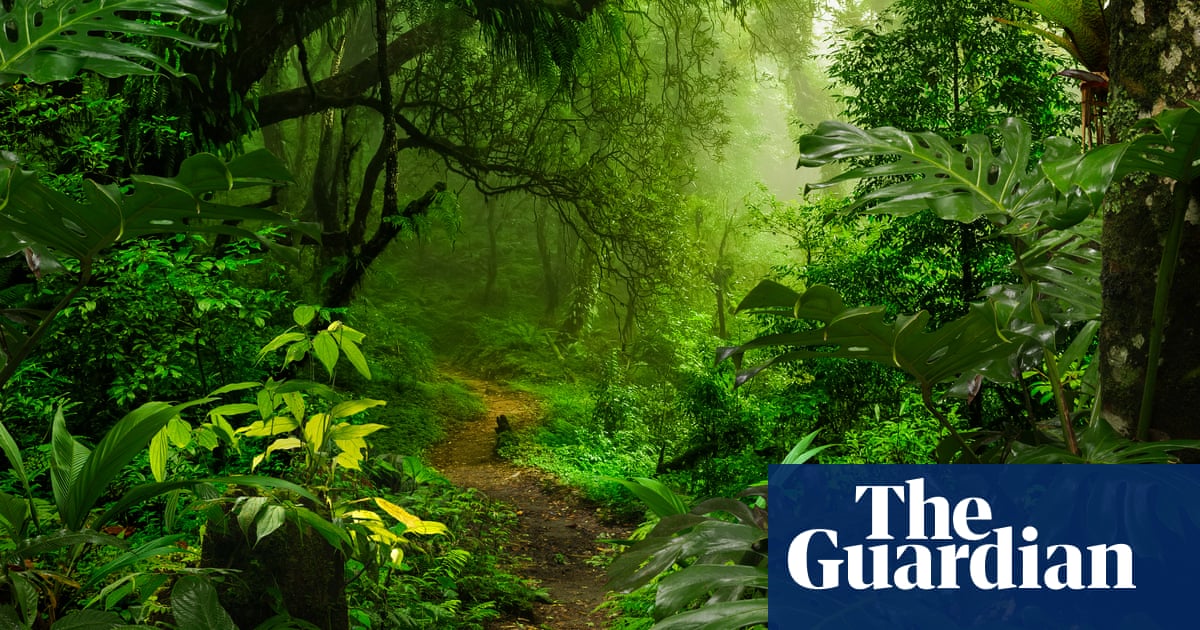A new point in history has been reached, entomologists say, as climate-led species’ collapse moves up the food chain even in supposedly protected regions free of pesticides
Reports of falling insect numbers around the world are not new. International reviews have estimated annual losses globally of between 1% and 2.5% of total biomass every year.
Widespread use of pesticides and fertilisers, light and chemical pollution, loss of habitat and the growth of industrial agriculture have all carved into their numbers. Often, these were deaths of proximity: insects are sensitive creatures, and any nearby source of pollution can send their populations crumbling.
But what Janzen and Hallwachs are witnessing is a part of a newer phenomenon: the catastrophic collapse of insect populations in supposedly protected regions of forest. “In the parts of Costa Rica that are heavily hit by pesticides, the insects are completely wiped out,” Hallwachs says.
Half Life Tree confirmed
Nothing will meaningfully improve until the rich fear for their lives
Do you guys remember driving down the highway in the 90’s and having your car absolutely covered in the mangled corpses of insects? To the point where wiper fluid is called bug wash?
I don’t know if this is the same everywhere, but my car stays pretty clean these days.
Yeah, I’m in California’s central valley, which is a lot like the Serengeti in that it’s a grassy desert-ish thing that’s seasonally wetted by snowpack melt. It’s actually pretty swampy in its natural state. Used to be that you couldn’t drive forty minutes here without your car being a hopeless mess, especially in the late winter/spring. Now, I almost never hit a bug at all. It’s been that way for years. I pointed it out to my nature-loving MAGA mom and it freaked her the fuck out.
Yes, cars had to wear bras
There are scientific studies on windshield bug death. If you want to solidify how big this insect collapse is, it’s scary. Those studies have seen up to 90% decline in certain areas. These studies also took aerodynamics into account.
deleted by creator
I lived in Louisiana in the 90’s. If you didn’t add a mesh (think window screen) to your car grill before driving on the highway, your radiator grill would clog with bugs and you’d overheat.
I remember Louisiana being like that even in the early 2000’s… Anyone know how it is now? I haven’t been back in 19 years.
I drive the I-10/12 stretch between Austin and Orlando at least four times per year and I used to drive between Austin and the French Quarter in the early 2010’s all the time because I had a place in the quarter. I have not seen bugs like I did in the 90’s since around 2010.
I was actually thinking about this very thing last week driving across Costa Rica. Aside from ants and the occasional gnat/mosquito, we really saw very few insects across the country as a whole. So it’s a global phenomenon, and things are probably a lot worse then we realize and care to admit.
Oh.my god. I never realized but you are absolutely right.
Even in the past 3 years there has been a noticeable decline. We moved 4 years ago to where we now live. The first spring and summer the place was buzzing with insects. We actually made the entire garden much more insect friendly but last year there were noticeably less than the previous year and this year it’s just dire. In april I walked around our back garden which was full with flowers and I had to stay in one spot for several minutes before I spotted the first bee. I am incredibly worried and depressed from this. It’s horrifying.
In Central Florida, we were overrun in the Spring with Lovebugs, which were an invasive species. They had sticky, acidic guts which would stick to cars and ruin the paint. Every Spring, stores would have big displays of the liquid to add to your wiper fluid to remove the Lovebugs from your windshield.
Then they disappeared, nearly overnight. A few years ago, the Spring hatching was really light, and it’s been lighter each year. I saw one Lovebugs this year.
The weird thing is, scientists have no idea why, because there is no grant money to study it. They are an invasive species, so we want them to go away. Nobody is going to spend money to find out why.
In the case of Lovebugs, their eradication was a positive outcome, but whatever wiped them out, could wipe out bugs that we want to keep because they are important to the food chain.
A substantial portion of the anthropocene extinction event is the Monsanto extinction event.
I can’t remember where I saw it, but it was a quote from an elderly man who was sad that the vast flocks of birds he saw over the midwest as a child are no longer around. Literally just directly poisoning the earth. Madness.
It’s mad, but there are a few people who get really rich and shareholders love them.
And, here is the important part, those rich people need that money so their high score wealth is bigger than that other rich person’s high score like wealth, not for mundane reasons like improving their quality of life or anything.
So… does at least Africa get to take a break from the tsetse fly?
Two neighbors where over yesterday and I was pointing out the insect loss I’ve seen in just a few years. They both had their mouths open in shock. “Shalafi, I never thought of that.”
We leave the porch lights on 24x7. Used to get filthy with bugs and there were tree frogs and salamanders camping out all night. Now there are none of the above.
So… You know that leaving the porch lights on 24/7 is part of the light pollution problem that kills insects, right?
the issue is, nobody cares about insects
Well I do… we need insects for a lot of reasons… but I fail to see what I can do for them. I’ve added a small water area, I don’t mow aggressively and let a portion of my garden absolutely wild… still I’m obviously having an abysmal and unnoticeable effect on the problem. So what now?
I’ve had a ton of success with bringing back bugs. First off, no pesticides or herbicides. Second, diverse plants with at least 1/2 native, and a decent amount of flowers, plants in the sage family and sunflower family are good choices for a quick impact. Third, mulch, and have areas with dead sticks and wood, rock piles etc.
My property started out with only earwigs, roly-polies and invasive grass. They sprayed everything for spiders.
It’s been 6 years and I have multiple species of bumblebees, flower flies, butterflies, moths, wasps, etc.
Mhhh si more plants it is. I’ll look into which of those are indigenous to Belgium and give it a go :)










